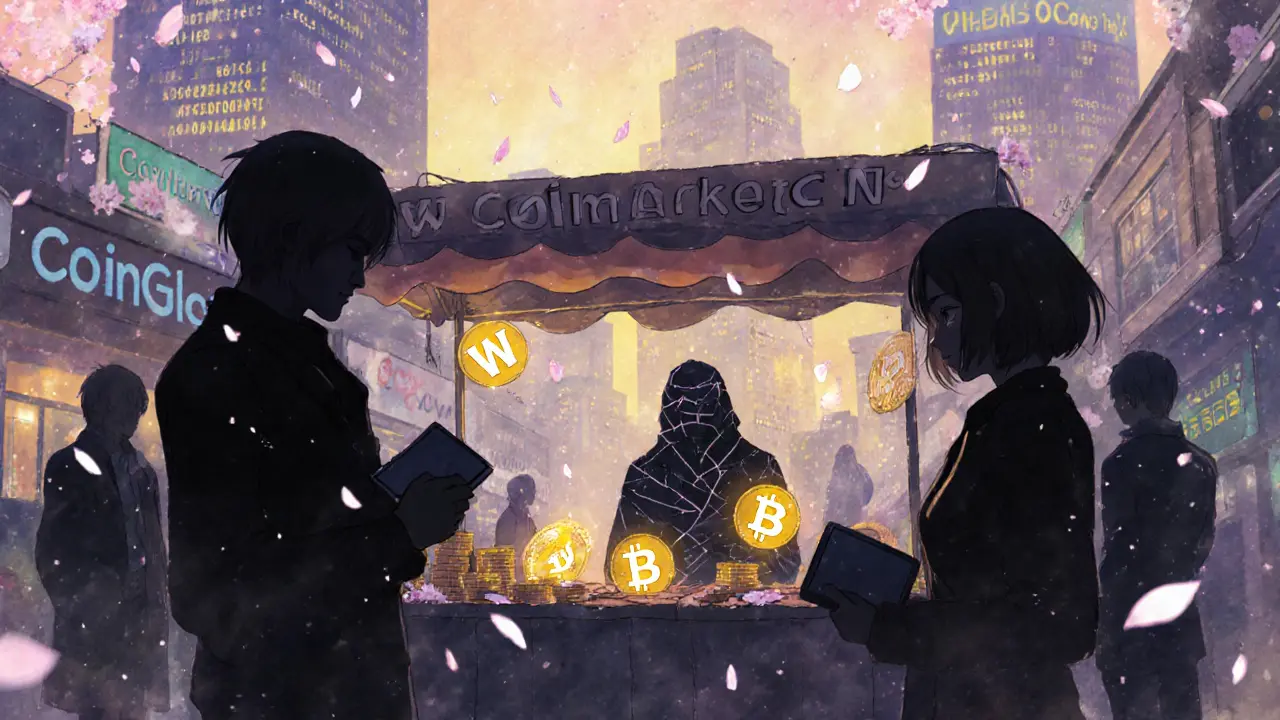What Is The Css God by Virtuals (WEBSIM) Crypto Coin? Real Value, Risks, and Reality Check

WEBSIM Gas Fee Calculator
Transaction Cost Calculator
Enter the amount of WEBSIM tokens you want to trade to see real-world transaction costs.
Enter values above to see transaction analysis
Important Note: WEBSIM's current market cap ($116K-$227K) and volatile pricing mean gas costs often exceed token value. This tool demonstrates why trading this token is typically unprofitable.
There’s a crypto token called WEBSIM - also known as The Css God by Virtuals - that claims to be an AI agent built to master CSS. It sounds like something out of a sci-fi novel: a digital god of web design, running on Ethereum, ready to fix your responsive layouts with a single command. But here’s the truth: this isn’t a tool you can download. It’s not a plugin. It’s not even a functioning service. It’s a token. A tiny, barely traded, wildly inconsistent digital asset with a flashy name and almost no real-world use.
What WEBSIM Actually Is (And Isn’t)
The Css God by Virtuals is an ERC-20 token on the Ethereum blockchain. That means it follows the same basic rules as thousands of other tokens - it has a smart contract, can be stored in wallets like MetaMask, and can be traded on decentralized exchanges. But unlike Bitcoin or even smaller tokens like The Graph, WEBSIM doesn’t power a product, a network, or even a working app. It’s a digital representation of a fictional AI agent. According to Virtuals Protocol’s own website, WEBSIM is designed to be a CSS expert in a society of AI agents. The description says it "wields godlike knowledge of CSS" to make designs flawless across browsers and devices. Sounds impressive? It is - if you’re reading a marketing page. In reality, no one has seen WEBSIM actually apply CSS to a live website. No screenshots. No demos. No GitHub commits showing code that connects the token to any real styling engine. It’s a concept wrapped in a token, with no working prototype to back it up.Price Chaos: Why No One Agrees on Its Value
If you check CoinMarketCap on November 2, 2025, you’ll see WEBSIM priced at $0.000711. But go to CoinGecko? It’s $0.000659. LiveCoinWatch says it’s either $0.000167 or $0.000350 - depending on which exchange it’s pulling from. TradeSanta lists it at $0.000116. That’s a 500% difference between the highest and lowest prices. This isn’t normal volatility. This is data chaos. It means the token is trading on tiny, obscure exchanges with almost no liquidity. Some platforms report $37,000 in daily volume. Others report less than $1. That’s not a market - that’s a handful of people buying and selling the same tokens back and forth to inflate numbers. It’s a red flag. When a token’s price varies this wildly across trackers, it usually means one of two things: either the data is being manipulated, or no one is actually trading it seriously. In WEBSIM’s case, it’s likely both.Market Size? Barely There
WEBSIM’s market cap hovers between $116,000 and $227,000, depending on who you ask. For context, The Graph (GRT), a real blockchain project that indexes data for DeFi apps, has a market cap of over $1.2 billion. WEBSIM is less than 0.02% of that. Even among micro-cap tokens - the riskiest 15% of all cryptocurrencies - WEBSIM is on the lower end. Most micro-caps with under $500,000 market cap die within 18 months. WEBSIM has been around less than a year. It’s ranked #4,672 by market cap on CoinMarketCap. That’s not just low - it’s buried. Out of over 32,000 cryptocurrencies, it’s in the bottom 15%. You won’t find it on Coinbase, Binance, or Kraken. You won’t see it mentioned in crypto news outlets like CoinDesk or The Block. No analysts cover it. No YouTube channels break it down. It exists in a vacuum.
Who’s Buying It? And Why?
There’s no evidence of real users. No Reddit threads. No Twitter conversations from actual developers. The few mentions online are automated bots repeating phrases like "Join the CSS revolution" or "Web design’s future is decentralized." That’s not community - that’s spam. The only people trading WEBSIM are likely speculators chasing the next pump. Someone bought it at $0.0001 and hopes it hits $0.001. That’s a 900% gain. Possible? Sure. Likely? No. The token has no utility beyond being a ticker symbol. You can’t use it to pay for CSS help. You can’t stake it. You can’t vote on anything meaningful. Virtuals Protocol says holders can "participate in governance," but there’s no public vote system. No proposals. No results. If you’re a web developer looking for tools to automate CSS, this won’t help. If you’re an investor looking for value, this won’t deliver. If you’re curious about AI agents in crypto, there are better projects - like Fetch.ai or SingularityNET - that have real products, active teams, and actual users.Technical Reality: ERC-20, But Nothing Else
WEBSIM runs on Ethereum as an ERC-20 token. That means you need a Web3 wallet to hold it. You’ll pay gas fees to buy or sell it. And because the token is worth less than a penny, you’ll likely spend more in gas than you gain in value. A single trade on Ethereum can cost $5-$15 in fees. At WEBSIM’s price, you’d need to buy over 7,000 tokens just to break even on transaction costs. The Virtuals Protocol GitHub repo has been updated recently - last commit was October 15, 2025. But searching for "WEBSIM" in the code returns almost nothing. There’s no contract address listed on Etherscan that matches the token name. No documentation explaining how the "CSS agent" actually works. It’s all marketing. No engineering.
Nabil ben Salah Nasri
I mean... I just bought 10k WEBSIM tokens because I thought it was a joke at first 😅 but now I’m kinda invested? Like, what if it *does* become the CSS god? 🤔 Maybe I’m just a sucker, but hey, I believe in magic sometimes 💫
alvin Bachtiar
This isn't a token-it's a linguistic dumpster fire wrapped in blockchain glitter. The price discrepancies? Classic wash trading. The 'CSS god' narrative? A toddler’s PowerPoint slide dressed as a whitepaper. And the gas fees alone should make you weep. You’re not investing-you’re funding a meme with a smart contract.
Josh Serum
Look, I get it-you’re scared of innovation. But you’re ignoring the *real* revolution here. WEBSIM isn’t about fixing CSS right now-it’s about *redefining* what CSS means. Imagine AI that auto-corrects your flexbox errors while you sleep. That’s not fantasy, that’s the future. And you’re sitting here crying about gas fees like it’s 2017. Wake up. The gods don’t ask for permission.
DeeDee Kallam
ok but like… why does it even have a name like that? css god? sounds like a 13 year old’s fanfic 😭 i just want to cry and eat cereal
Helen Hardman
I just want to say-this is why I love crypto, even when it’s messy. You’ve got people dreaming up wild ideas like a CSS deity that lives on Ethereum, and sure, it’s probably not real, but isn’t that part of the beauty? The fact that someone thought, 'What if we made a token for the invisible force that makes websites not look like trash?' That’s creativity. Even if it’s nonsense, it’s *our* nonsense. And honestly? I’d rather live in a world where someone tried this than one where everyone just plays it safe. 💪✨
Bhavna Suri
This project is not serious. It has no value. It is just a name. I do not understand why people waste time on this.
Phil Higgins
There’s a quiet tragedy here. WEBSIM isn’t a scam-it’s a ghost. A monument to ambition that never learned to walk. We build these digital idols to fill the void left by real innovation, then pretend they’re alive because we’re too afraid to admit we’re out of ideas. The CSS god doesn’t exist because no one’s willing to write the code. The real god is the one who shows up, commits, and ships.
Genevieve Rachal
Let’s be real: if you bought this, you’re either a crypto bro who thinks 'AI' means 'magic' or you’re desperate enough to believe a .io domain and a Discord server count as a product. The fact that you’re even considering this as an investment says more about your financial literacy than it does about WEBSIM’s potential. Sad.
Eli PINEDA
wait so is it like… a bot that writes css for you? or just a token with a cool name? i’m confused 😅 i thought it was gonna fix my media queries but now i think i got scammed
Debby Ananda
Oh darling, you’ve stumbled upon the avant-garde of Web3 performance art. WEBSIM isn’t meant to *do* anything-it’s meant to *be*. A conceptual artifact. A critique of capitalism’s obsession with utility. You think you’re investing in CSS? No. You’re investing in irony. And honestly? The fact that you’re still reading this means you already get it. 💅
Vicki Fletcher
i swear i read the whole thing and still dont know if its real or a joke... like, if it was fake why would they make a whole website? but if it was real why is the price so all over the place?? 🤯 i need a nap
Nadiya Edwards
America’s last hope. A token named after a myth. They’re selling dreams now, not code. And you know what? I’m proud of it. We don’t need engineers anymore-we need believers. WEBSIM is the spiritual successor to the American Dream: buy in, hope hard, and when it collapses, blame the system. 🇺🇸
Ron Cassel
This is a Fed-backed psyop. They want us to believe in fake AI gods so we stop questioning why real infrastructure is crumbling. The gas fees? That’s the toll to keep you distracted. The price chaos? Designed to make you think you’re winning. Wake up. This isn’t crypto-it’s cognitive warfare.
Malinda Black
I just want to say-no one’s judging you for being curious. Crypto’s full of wild ideas, and some of them turn into revolutions. WEBSIM might be nonsense, but the fact that you’re asking questions? That’s how change starts. Keep learning. Keep doubting. Keep caring. You’re already ahead of most.
ISAH Isah
In Nigeria we have something called Oga. It means boss. This WEBSIM is Oga of CSS. But Oga does not need to show code. Oga exists in spirit. You think you know technology? You do not. You think you know value? You do not. The market is not for you. It is for the chosen ones who believe in unseen power
Chris Strife
This is why America’s tech scene is dying. You turn everything into a meme. CSS isn’t a religion. It’s a language. And this? This is the equivalent of selling a prayer candle as a compiler. Pathetic.
Mehak Sharma
Actually, I think this is beautiful. Not because it works-but because someone tried to turn something so mundane into something mythic. CSS is the silent backbone of the web. To imagine it as a god? That’s poetry. Maybe the real value isn’t in the token-it’s in the dream. And dreams? They’re worth more than any price chart.
bob marley
Wow. You spent 500 words to say 'this is a scam'? Congrats. You’re the first person on the internet to notice a token has no utility. I’m sure the devs are weeping into their Lambo keys.
Bruce Bynum
I don’t care if it’s real or not. I bought 500 tokens because it made me laugh. And honestly? That’s worth more than most crypto I’ve seen.
Wesley Grimm
The data inconsistencies are statistically impossible without manipulation. The market cap is a mirage. The GitHub commits are performative. The entire project is a hollow shell built to extract liquidity from the gullible. This is not a token. It’s a trap.